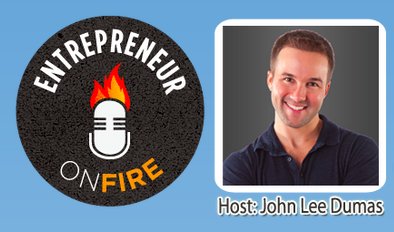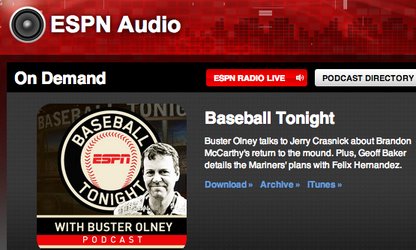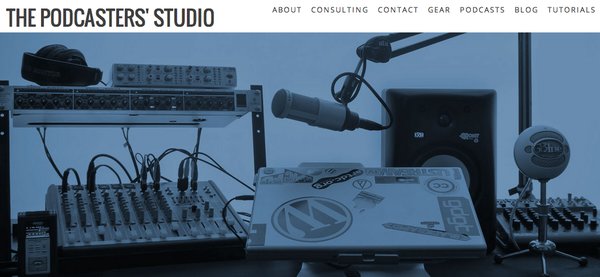Brands
How to Develop a Great Branded Podcast
Before John Lee Dumas became a well-known podcaster in the business world, he was simply an avid podcast listener. He had no background in radio, but he did have a unique idea — to interview a different entrepreneur daily to talk about their challenges and “Aha” moments.
He took a chance and decided to make podcasting his full-time gig. That’s how EntrepreneurOnFire was born.

“Having been in real estate, I was often in my car a lot and became a huge fan of podcasting. I just knew there were people like me who were spending a lot of time in these situations where they could only be consuming audio content,” says Dumas.
EntrepreneurOnFire is downloaded over 120,000 unique times every month in over 100 countries, with Dumas signing up 30 to 40 new subscribers per day. Recent interviewees have included Barbara Corcoran from TV’s “Shark Tank,” as well as social media gurus Gary Vaynerchuck and Seth Godin.
“With podcasting, people are not looking for the morning shock-jock sound or even a radio voice. In fact, they are likely trying to get away from that.”
Think your content would work well in audio form, too? Launching a successful podcast is a commitment, but it’s not as difficult as you’d think. Here’s why and how to get started:
Why podcasting?
While you might not want to commit to podcasting five times per week, since it’s still a relatively untapped source of content, it’s worth a shot, says Dumas.
“Literally just five years ago, no one saw YouTube as a search engine; now it’s the number two search engine in the world,” he says. “iTunes is on that same trajectory. People are going there to search free [podcast] content. You need to be there.”

In fact, many media companies and publishers from ESPN and The New York Times to Martha Stewart and Random House have incorporated podcasts into their media mix. While brands outside of the publishing space have been a little slower to adapt, companies like Etsy, NASCAR, Vanguard, and — yes — Apple, offer how-to and informational podcast content for their customers.
For those representing a lesser-known brand or who want to promote a new book or product, podcasting is a fairly low-cost way to spread some awareness and build an audience, without having to compete with big name brands right out of the gate.
Getting started
With user-friendly technologies available, the barrier to producing a podcast is low, Dumas says. “You literally can start by using the microphone in your computer,” he says. Better still is investing in an inexpensive USB or stand-alone microphone that you can speak into (good ones will run you less than $50).
Then you can record and edit your podcast using programs like GarageBand on Mac or Audacity on PC. All that’s left to do is upload your file, and submit the RSS feed to a host (iTunes being the most popular option). Dumas’ podcast spent eight weeks as the number one ranked podcast in iTunes “New and Noteworthy ” section when he started out, which turned out to be a great launching pad for him.
Here’s what’s great: “It’s an even playing field, whether you are podcasting for a brand, or a mom who wants to talk about how she makes cookies while her kids are in school,” says Dumas.
“You want to make getting into the iTunes store a top priority,” agrees Ray Ortega, founder of The Podcasters’ Studio, a site offering advice and services for podcasters. Other important places your podcast should be submitted include Windows Phone (formally Zune Marketplace), Miro, BlackBerry, and Stitcher, he says. “Start with the biggest ‘podcatchers’ listed here, and then move on to others as you grow.”
“You want to make getting into the iTunes store a top priority.”
Another option is to join a host site that handles all of the technology for you, as Laurie Leiker does on her BlogTalkRadio.com podcast.
“There are several websites that will not only provide all the technology you need, but will also walk you through the process with very easy-to-use instructions,” says Leiker, also known as the Lonely Gourmet, and host of the Friday Radio Feast podcast. “It’s free, each show is automatically uploaded to iTunes and is also archived on the BTR site.
The elements of a great podcast
While there’s no secret formula for creating a successful podcast, it really comes down to two major elements:
Your voice
Yes, your voice, the one that you hate the sound of. “With podcasting, people are not looking for the morning shock-jock sound or even a radio voice,” assures Ortega. “In fact, they are likely trying to get away from that. People are not so much listening to your voice as they are listening to what you have to say.”
Quality content
“Always value your listener’s time,” advised Dumas. Your goal with every podcast, just as it is with every blog post, is to make your content extremely valuable and direct.
Dumas aims for 25-35 minute-long podcasts because his typical listener is tuning in during their commute or during a workout at the gym. But, he points out, many popular podcasts are just five minutes long for listeners who like to pick up a quick tip and get out. The key is to go just long enough to get your message out and keep your listeners engaged.
So, what are you waiting for? Get a good microphone, choose to use your own domain or another media host, properly set up your RSS feed, and you’re on your way to putting your audio content online to a worldwide audience.
Get better at your job right now.
Read our monthly newsletter to master content marketing. It’s made for marketers, creators, and everyone in between.





